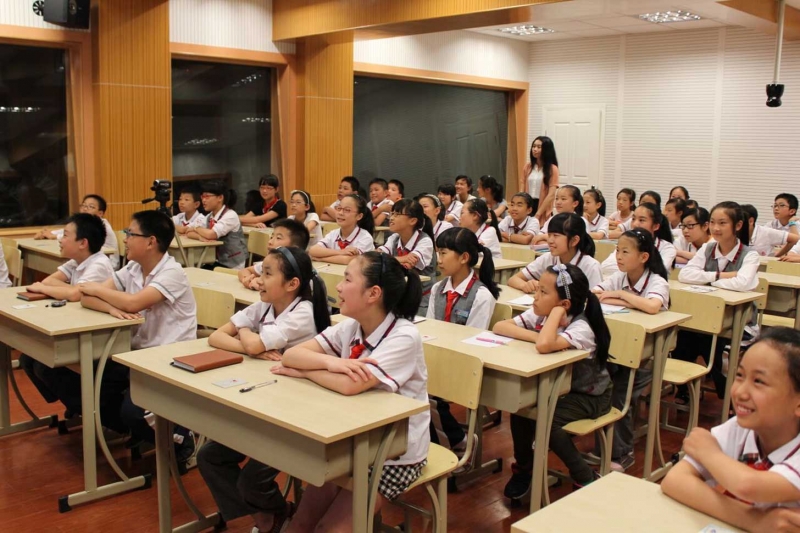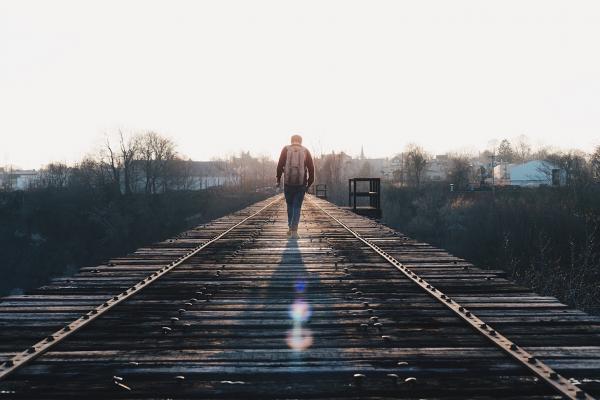We were exchanging glares as Kubikhan, a Kazakh eagle hunter, sharpened one of his many knives on the rough bottom of a porcelain bowl. His stocky figure hunched over the task at hand and his wispy moustache seemed to block any words from coming out of his mouth. His home was dark, but the candle glowing on the low table was enough to display the fire in his eyes.
I was filled with fear as I watched him. After four days of gruelling travel to Mongolia’s most remote region, my dream of meeting one of the country’s rare eagle hunters was turning into a nightmare. Kubikhan occasionally took a swig of vodka and glanced down at the animal he was carving. Sitting face to face in silence, dinner was served, but my appetite was gone.
A week earlier, when I arrived in Mongolia’s capital, Ulaanbaatar, my camera was stolen as I stepped onto the platform. Feeling bummed and paranoid, I made my way to a guesthouse where a very energetic host named Zaya gave me the low-down.
“Don’t go out at night, close your curtains, and there is nowhere on your body where you can keep your money safely—even secret pockets.”
Welcome to Mongolia, or at least Ulaanbaatar. After the fall of communism, Mongolia’s financial support from Russia dried up. While some rural herdsmen became richer without a state-run system, more have failed. Many herders moved to the capital in search of help—but instead they’ve turned to prostitution, alcohol and drugs as they struggle to adapt to an urban existence.
It was not Ulaanbaatar that drew me to this country, but the Western part of Mongolia. The region is home to a significant Kazakh population, among which live fewer than a hundred eagle hunters. These hunters are semi-nomadic herdsmen, who train golden eagles to hunt foxes and wolves for them. With all the changes going on in Mongolia, my aim was to capture an eagle hunter on video, for fear that they might one day become extinct.
I walked into an outfitter’s office where I found a package tour that could fly me 1,600 kilometres west to a Kazakh eagle hunter. These hunters are rare and their region is remote, so I felt the package tour made them too accessible—and too vulnerable. It’s always the same story: humans find a unique place to visit, the road gets paved, and the resulting flood of tourists kills the very thing that people went there to visit in the first place. It became my secondary purpose to find my own way to the eagle hunters by travelling overland.
Zaya took me to a Kazakh hotel in Ulaanbaatar where we knocked at a door on the top floor. We entered the room and I trembled. The largest Russian man I had ever seen with an equally massive head sat in a bed wearing a grimy tank top. Beside the bed was a table with a huge knife, a piece of meat and a bottle of vodka. Zaya spoke Russian and translated the truck driver’s grunts. He said that travelling overland to Western Mongolia would take a year off my life, and I’d most likely break my spine. I understood why some might opt for the package tour.
With persistence, I eventually landed a ride. A few Kazakhs had come to town in a Russian jeep in order to buy a Korean van, and now they had to make the trip back with both vehicles. Reluctant at first, they eventually offered to take me, for $50, on the most spectacular, unpackaged tour of my life across Mongolia.
Waiting to leave from a garage lot, I tried to make small talk with the other travellers but it was tough. I resorted to a magic trick I knew, which gives the illusion of levitating off the ground. The group broke out in giggles, but more importantly, they thought it was real! They became so curious and ran circles around me as I retained my secret. Some jumped in the air and tried to levitate. After a few hours of waiting, I was smuggled out of the gates that surround Ulaanbaatar and the journey began.
There was no road for most of the trip, just open space. We crossed raging rivers and scaled huge mountains as we charged westward. I made small talk with the driver using my translation book but I couldn’t figure out why the jeep kept stopping at night. The driver would get out of the car and stand still, peering into the darkness. Struggling to communicate in broken Mongolian, I eventually made the humbling discovery that the driver was looking at the stars to navigate over the open, desert-like terrain.
He said that travelling overland to Western Mongolia would take a year off my line, and I'd most likely break my spine. I understood why some might opt for the package tour.
After two days and nights of driving, I woke up on a mountain pass at 2,800 metres elevation, ploughing through blankets of snow. We pushed and dug as ‘the little-van-that-could’ suddenly could not. I was wet, cold, and hungry, but oddly I was happy. Stuck in the snow, I built a snowman and people’s discouragement spun for the better. I had chosen the physically uncomfortable route as human cargo, but I had never felt so close to my senses.
By day four, we had been driving for over 70 hours and my spine was accustomed to the jolting abuse. The jeep had broken down three times but we always managed to move along, crossing barren mountains stretching beyond sight. Only the occasional nomad’s ger (tent) was testimony to life in the world’s least densely populated country. Eventually, we arrived at a place that appeared to be planet earth where I was dropped off at Kubikhan’s home high in the mountains.
When Kubikhan finished carving the sheep, my fears gave way to appetite. I washed down almost every bite with a swig of vodka. Sitting around a dinner table with Kubikhan, his wife, two teenaged sons and his 22-year-old daughter, they quizzed me about life outside Mongolia.
“What is happening in foreign land?” was one of the first questions Kubikhan directed at me through our translator, Bekbolat. At first, communicating with Kubikhan through a translator was at best choppy, but we soon became accustomed to the lag between question and answer. Kubikhan had seen his first and only tourist back in 1988, so for him, I was a link to a foreign world that he was curious about. I did my best to answer the family’s questions about North American animals and farming practices, such as pesticides. The entire family—including the translator—chuckled when I told them farmers in America need fences to contain their animals.
“Would you like some white food?” Kubikhan’s wife, Couliash, gestured toward the fresh yogourt she had put on the table for dessert. In Kazakh, the term white food refers to all dairy products including yogourt, cheese, butter and milk. I marvelled at the straightforwardness of a language so uncluttered with unnecessary words. Food is referred to by its colour, and shoes are simply referred to as ‘clothing for the feet.’
Kubikhan’s eagle slept with us in the ger, perched on a piece of wood. Hunting with an eagle like Kubikhan’s involves trekking over mountain ranges on horseback in search of prey. When a wolf or a fox is caught, the skin is used to make clothing and the story of the hunt becomes the topic of pride at family gatherings. Hunters like Kubikhan fly their birds only in the winter when food is scarce, to ensure the bird returns to its master. Unfortunately for me, that meant that Kubikhan didn’t want to show me what his eagle could do.
“I don’t want to risk losing it,” Kubikhan told me through Bekbolat. By this time, communication through Bekbolat had improved significantly. Kubikhan and I looked at each other when we spoke, almost forgetting that Bekbolat was there.
On my last day, with a broken charger and only a speck of battery left on my camera, Kubikhan decided to take a chance. He pointed at his eagle, and then at my camera, and I nodded—there was no need for Bekbolat to interject.
My camera battery had no more than five minutes left on it, but it was just enough to capture the scene. Kubikhan laid a dead hare at the foot of a mountain and motioned for me to follow him to the top. Kubikhan removed the eagle’s blinder and it instantly spotted the hare at 500 feet away. He set it free and it unfolded its six-foot wingspan, diving straight towards the hare. The eagle clawed the hare and clutched it firmly without eating a single bite. Kubikhan ran down the mountain to congratulate the eagle and feed it a piece of meat. I eventually caught up with my camera and managed to capture Kubikhan, beaming with pride, feeding and petting his golden eagle after a successful flight.
With 16 videotapes packed in my safest of places, all of Kubikhan's relatives came out to say goodbye. Just before I boarded the Russian jeep, Kubikhan put his hands to his face and broke down crying. The tears were contagious and soon enough everyone was crying. We hugged and wept, and I couldn’t help but think how wrong I had been about this man and his family. When I got in the jeep to make the trip back to Ulaanbaatar, I promised myself to do everything I could to one day make the journey back to visit this land that had strangely enough began to feel like home.
Add this article to your reading list



